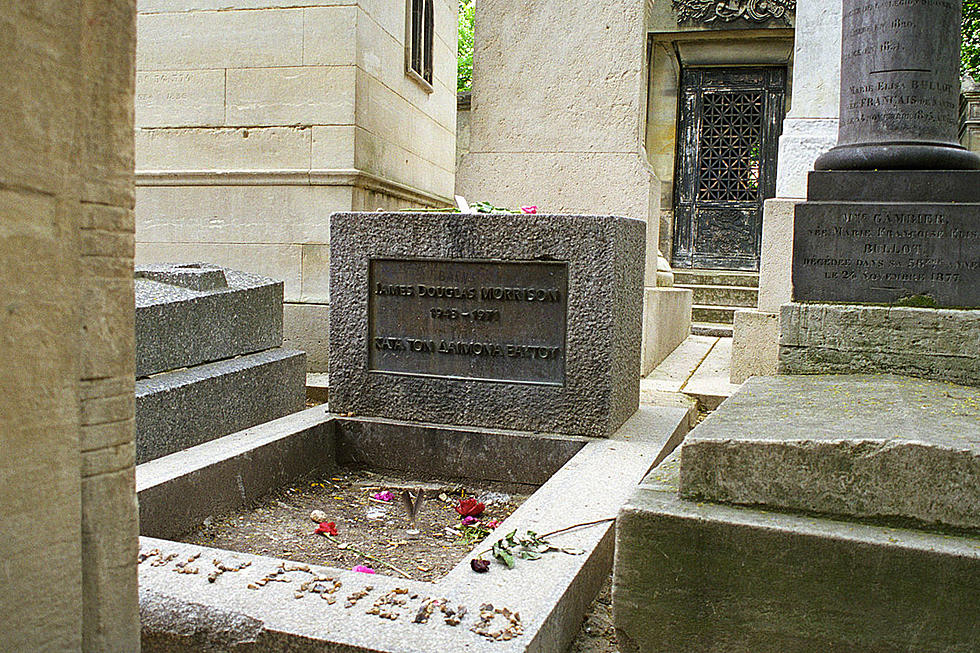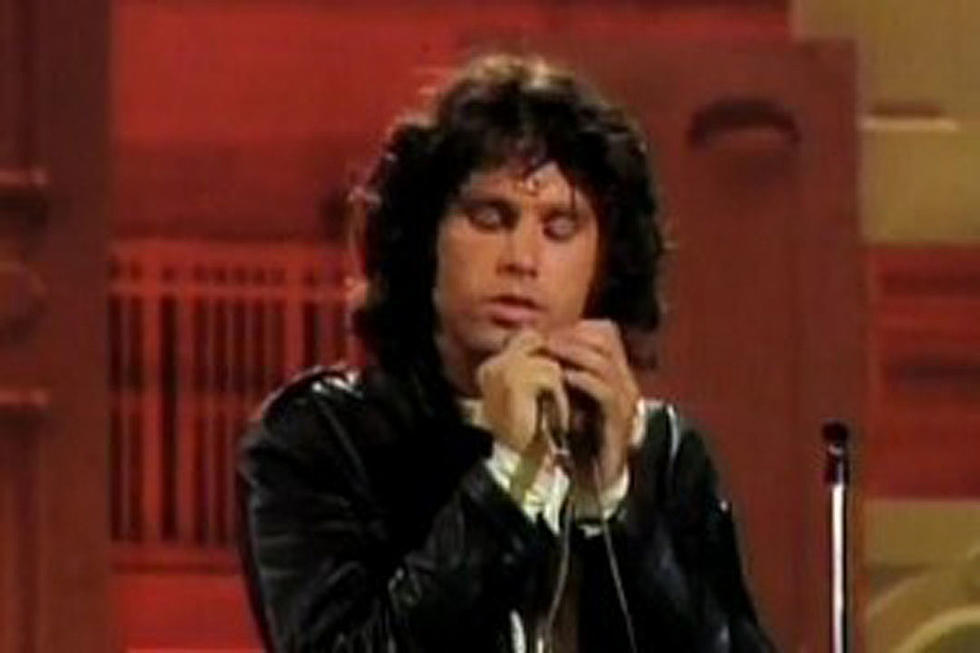
The Day Jim Morrison Was Buried
Rock 'n' roll icons never seem to be allowed to simply pass away quietly into the night.
There’s often some sort of conspiracy surrounding the death, especially if it was under strange circumstances. When Doors singer Jim Morrison died in July 1971, in Paris at the age of 27, all the requisite boxes were ticked for an old-fashioned mystery.
By the time Morrison was laid to rest for the final time four days later, hardly anyone had seen the corpse – save for Morrison’s girlfriend, Pamela Courson, the examining doctor and a couple of fire and police officials whose identities were quickly forgotten. The young American who found fame in the Los Angeles band had died in a foreign country, and things had gotten really murky really fast.
Morrison’s reasons for coming to Paris four months beforehand were unclear. Some said he wanted to escape the one-dimensional rock-star notoriety he received in the States and to pursue his poetry leanings in the City of Light.
Others thought he needed a break from the endless partying and wanted to spend quality time with Courson. There was also a pending appeal of an indecent-exposure charge with a very real possibility of jail time, depending on the ruling.
Rumors of Morrison’s death spread rapidly throughout Paris over the early-July weekend, but when reporters reached someone in his flat, they were told he was in a local hospital “resting.”
The regional office of the United Press International reported the singer was "recovering and being treated in a hospital or sanitarium," according to Rolling Stone.
Clive Selwood from the London offices of Elektra had fielded numerous inquiries about the matter from U.K. journalists, enough to prompt him to ring the record label’s Paris division, which had no information. The American Embassy wasn’t much help either; all they could offer was that nobody with the Morrison surname had been checked into a French morgue. In reality, Morrison was packed in dry ice in a bathtub, waiting on a $75 casket to arrive at the flat he shared with Courson, located at Rue Beautreillis 17.
According to his 2003 autobiography, All the Moves (but none of the licks), Selwood called Door’s manager Bill Siddons well before the sun rose in L.A. for assistance on the situation. Morrison had been the subject of numerous death hoaxes and rumors over the years – so many that Siddons went back to sleep. He managed to reach Courson later in the morning, and she informed that Morrison was fine. Siddons sensed something was awry and kept pushing Courson until she finally broke down and told the truth. Siddons took the first flight to Paris he could find and made it there the next morning.
Courson had the singer’s death certificate inscribed “James Morrison, poet.” Part of the reason the situation had been kept quiet was to provide a brief window for the couple’s French-born friend Alain Ronay some time to secure a grave in Père Lachaise, the largest cemetery in Paris and final resting home to poet Oscar Wilde, singer Édith Piaf and composer Georges Bizet. Lobbying for an American rock singer with Morrison's reputation to be granted a space there would never be approved, so he needed to slip in under the radar.
What happened when Siddons arrived was one of the most egregious kick-starters to the budding controversy: He didn’t take the opportunity to inspect the body in the casket, according to Ray Manzarek in his 1998 autobiography Light My Fire, despite having been urged prior to leaving Los Angeles by the Doors’ keyboardist: “This time, make sure.” Instead, Siddons took part in a short funeral, with less than half a dozen mourners in attendance, by the unmarked grave, located in the Poet’s Corner near 17th century playwright Molière.
"Everything was done in a hurry,” a woman was visiting a nearby grave told a German television news program and later reported by The Doors Quarterly. “No priest was present, everybody left quickly. The whole scene was piteous and miserable.”
Specifically, Morrison ended up in the sixth division, grade five, second row. There was no headstone. A simple plaque in the subsequent days would be installed only to be stolen, replaced, then stolen again – followed by a sculpted bust in 1981 that was defaced and ultimately lifted as well. A 30-year lease was taken out on the spot, renewed in perpetuity by the Morrison family years later.
Upon his return to Los Angeles, Siddons issued a statement to Rolling Stone which read in part, "There was no service, and that made it all the better. We just threw some flowers and dirt and said goodbye." Manzarek later recalled a heated exchange he had with Siddons afterward, where he incredulously asked the manager, “How do you even know he was in the coffin? How do you know it wasn’t 150 pounds of fucking sand? You buried a sealed coffin, man. We’ll never know the real truth now. It’s all gonna be rumors from here on out.”
Manzarek was right. To this day, the official cause of death – a heart attack – is contested. Among the litany of conjecture are an accidental heroin overdose, stabbing, undiagnosed complications from a two-story fall at the Chateau Marmont in Los Angeles months before and, of course, the pervading theory James Douglas Morrison faked the whole damn episode and is still out there somewhere. Which would make for the greatest tale in music history.
Rock's Most Famous Graves
More From Awesome 98










